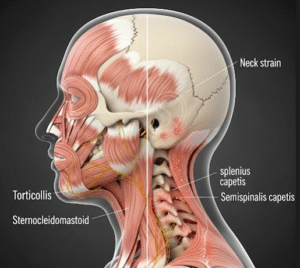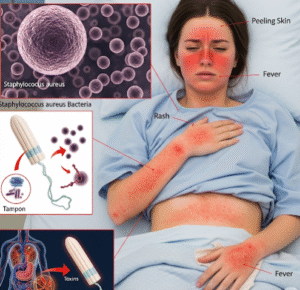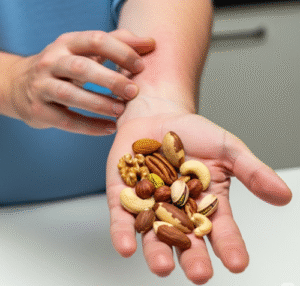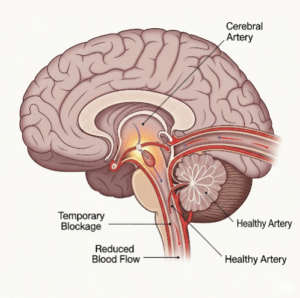Overview
Temporomandibular Joint (TMJ) disorders refer to a group of conditions affecting the jaw joint and the muscles that control jaw movement. The TMJ connects the lower jaw (mandible) to the skull (temporal bone) and functions like a sliding hinge, allowing activities such as speaking, chewing, and yawning. TMJ disorders can cause pain, restricted movement, and functional difficulties that significantly impact daily life. In Korea, advanced diagnostic tools and a range of treatment options—both surgical and non-surgical—are available, ensuring patients receive comprehensive care tailored to their specific condition.
What is Temporomandibular Joint (TMJ) Disorder?
TMJ disorders encompass any dysfunction or pain in the jaw joint and its surrounding muscles. They may result from structural issues within the joint, muscle tension, injury, or other underlying medical conditions. Symptoms can vary from mild discomfort to severe pain, and in some cases, patients may experience locking of the jaw, clicking, or popping sounds when opening or closing the mouth. TMJ disorders are relatively common and can affect individuals of any age, though women are statistically more likely to experience them.
Symptoms
The symptoms of TMJ disorders can range in severity and may include:
- Persistent jaw pain or tenderness in the face, neck, or shoulders
- Clicking, popping, or grating sounds when opening or closing the mouth
- Limited range of motion or locking of the jaw
- Headaches, earaches, or tinnitus (ringing in the ears)
- Difficulty chewing or a sudden uncomfortable bite
- Swelling on the side of the face
- Pain that worsens during activities like yawning, speaking, or eating
Symptoms may appear gradually or suddenly and can be intermittent or continuous, depending on the underlying cause. In severe cases, untreated TMJ disorders may interfere with daily activities and overall quality of life.
Causes
TMJ disorders can be caused by a variety of factors, including:
- Jaw injuries: Trauma from accidents, falls, or sports-related injuries can damage the joint or surrounding tissues.
- Arthritis: Osteoarthritis or rheumatoid arthritis can lead to inflammation and degeneration of the TMJ.
- Jaw misalignment: Improper alignment of teeth or bite (malocclusion) can stress the TMJ and associated muscles.
- Muscle tension: Chronic clenching or grinding of teeth (bruxism) increases pressure on the joint.
- Connective tissue diseases: Certain systemic conditions affecting connective tissues may predispose the joint to dysfunction.
- Stress: Emotional stress may lead to jaw clenching or muscle tension, contributing to TMJ problems.
Risk Factors
Several factors can increase the likelihood of developing TMJ disorders:
- Gender: Women are more frequently affected, possibly due to hormonal differences influencing joint laxity.
- Age: TMJ disorders most commonly occur between the ages of 20 and 40.
- Genetics: Family history may predispose individuals to joint-related conditions.
- Dental issues: Poor dental alignment or missing teeth can alter jaw mechanics.
- Lifestyle factors: Chronic stress, habits like gum chewing, and teeth grinding increase the risk.
- Previous jaw injuries: Prior trauma or surgery in the jaw area can contribute to TMJ dysfunction.
Complications
If left untreated, TMJ disorders may lead to several complications:
- Chronic pain in the jaw, face, or neck
- Persistent headaches or migraines
- Worsening of teeth grinding, leading to dental damage
- Difficulty eating or speaking
- Limited jaw mobility or locking of the jaw
- Ear-related symptoms such as tinnitus or hearing difficulties
- Psychological effects, including anxiety or depression due to chronic pain
Prevention
While not all TMJ disorders are preventable, the following measures can reduce the risk or severity:
- Avoid excessive jaw movements, such as wide yawning or prolonged chewing of tough foods
- Manage stress through relaxation techniques, meditation, or yoga
- Use a mouthguard at night if prone to teeth grinding
- Maintain good posture, particularly when using computers or mobile devices
- Avoid biting nails, chewing gum excessively, or resting the chin on hands
- Seek early dental care for bite alignment issues or missing teeth
Treatment Options in Korea
Korea offers a wide range of TMJ treatment options, combining advanced medical technology with highly skilled specialists:
1. Conservative Treatments
- Medications: Pain relievers, anti-inflammatory drugs, and muscle relaxants can reduce discomfort.
- Physical therapy: Jaw exercises, ultrasound therapy, and massage can improve joint mobility and relieve muscle tension.
- Occlusal splints or mouthguards: Custom-made devices prevent teeth grinding and reduce stress on the TMJ.
2. Minimally Invasive Procedures
- Arthrocentesis: Flushing the joint to remove inflammatory debris and improve movement.
- Injections: Corticosteroid or hyaluronic acid injections may reduce inflammation and pain.
3. Surgical Treatments
- Arthroscopy: A minimally invasive procedure to inspect and treat joint disorders.
- Open-joint surgery: Reserved for severe cases, including joint reconstruction or replacement.
4. Complementary Approaches
- Acupuncture, biofeedback, and chiropractic treatments are sometimes used alongside conventional therapy to relieve pain and improve function.
5. Post-treatment Care
- Patients in Korea often receive personalized rehabilitation plans, including jaw exercises, dietary recommendations, and follow-up consultations to prevent recurrence.
Cost and Hospital Care
In Korea, TMJ treatment costs vary depending on the type of intervention. Non-surgical management is generally more affordable, while surgical procedures, including arthroscopy or reconstruction, are more costly. Top hospitals and dental centers offer comprehensive care, ensuring accurate diagnosis with imaging tools such as MRI or CT scans and multidisciplinary treatment plans.
Korean TMJ specialists emphasize early diagnosis and tailored treatment strategies to minimize long-term complications and restore optimal jaw function. Patients can benefit from integrated care, including advanced pain management, minimally invasive procedures, and follow-up rehabilitation, making Korea a leading destination for TMJ disorder management.













